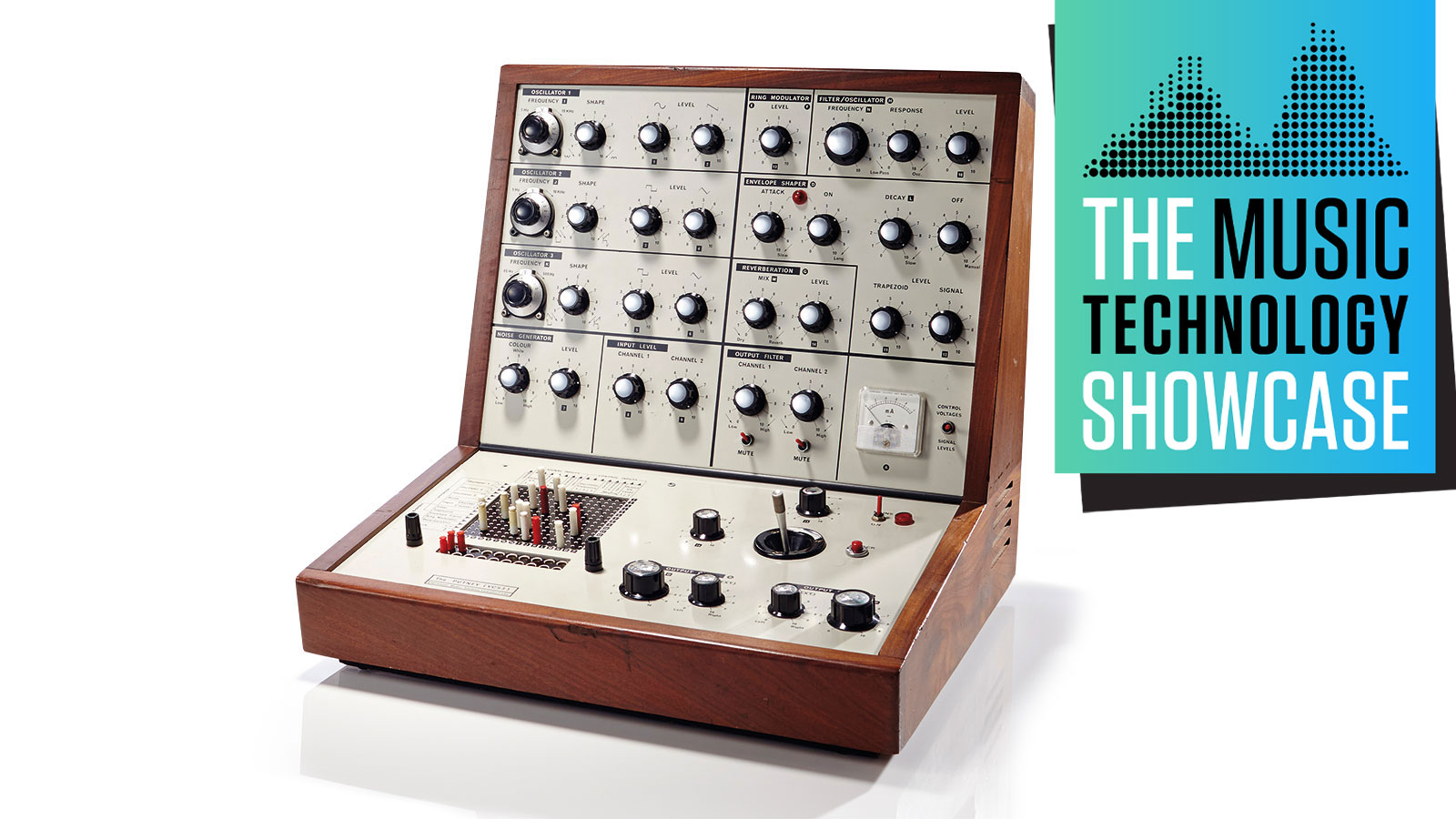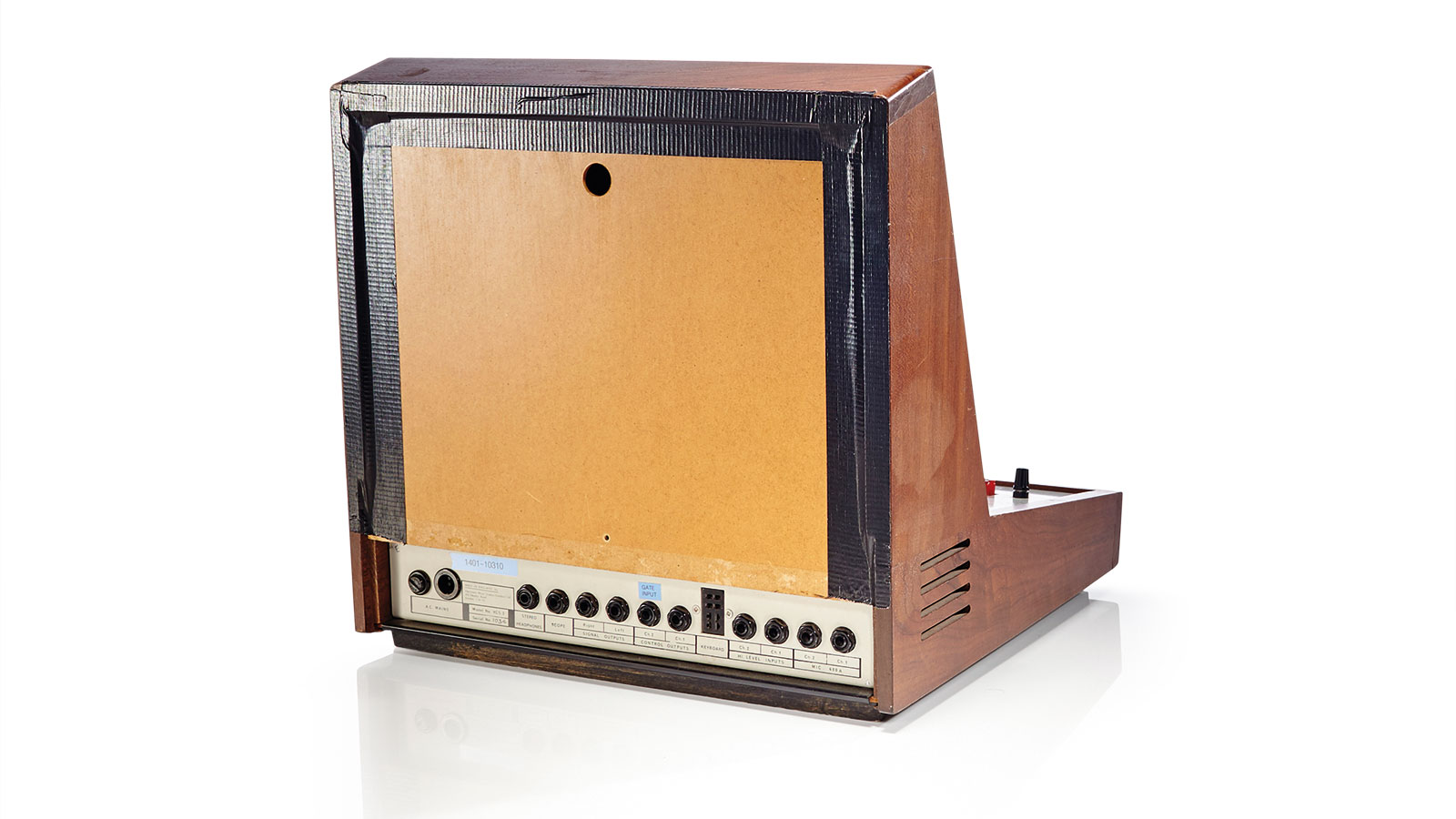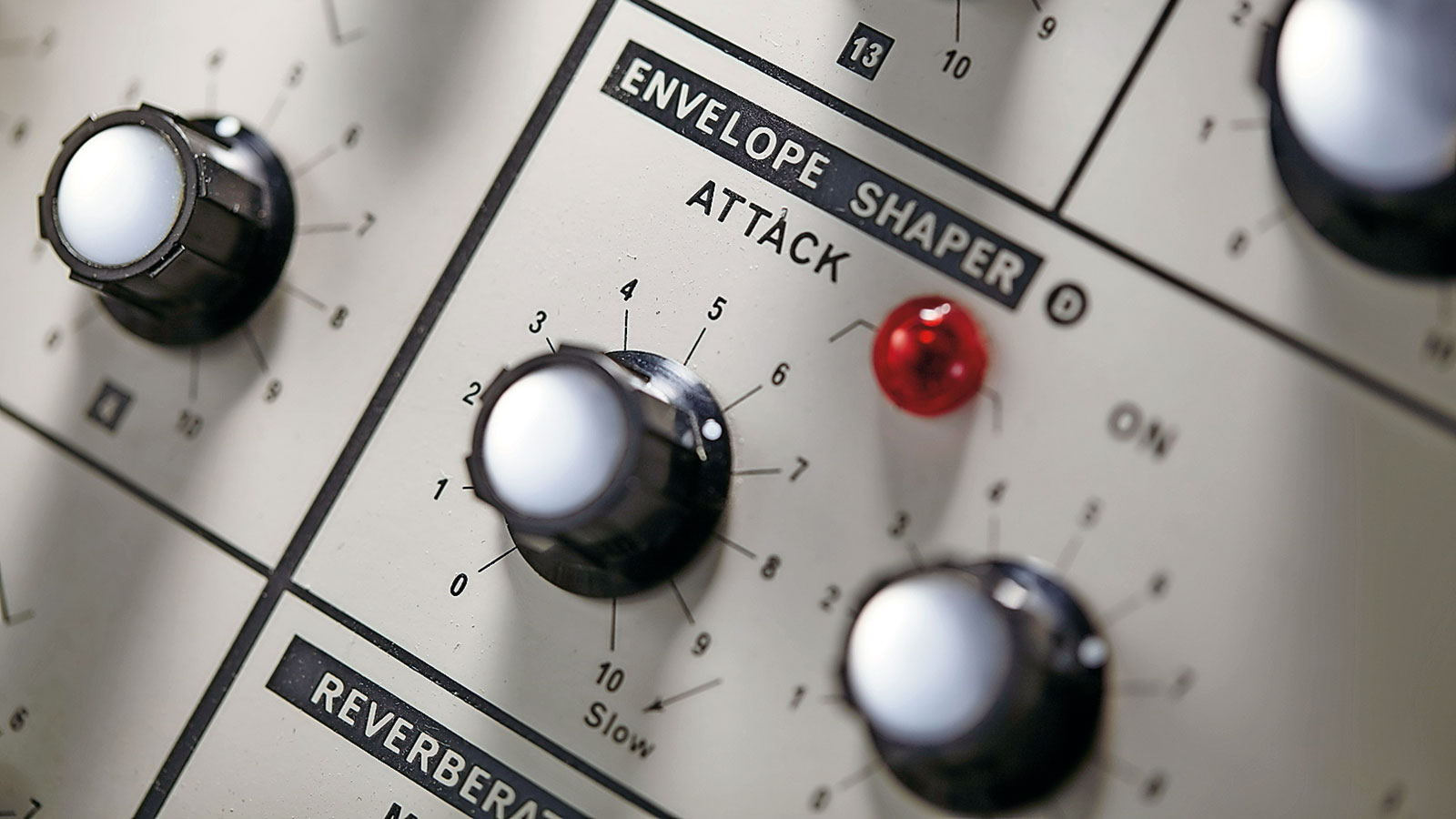Vintage music tech icons: EMS VCS3
England’s first commercial synthesizer, responsible for the psychedelic sound of the ’70s

Music Tech Showcase 2021: The VCS3 is an unusual success story. Though it never sold in any great numbers, its sheer longevity is to be admired. While plenty of classic instruments have been revived in recent years, the VCS3 is unique in having never officially been out of production.
EMS themselves have gone through many changes over the past few decades and for a while were not in the business of producing synthesizers. Yet a few VCS3s have occasionally been made to order and, in recent years, every so often a small production run is trundled out of EMS headquarters (now in Cornwall) to fulfil a waiting list of very patient customers. Sadly, original EMS founder Peter Zinovieff passed away in June of this year.
Meanwhile, the original models continue to be sought after and treasured by a growing number of electronic music aficionados willing to pay enormously inflated second-hand prices.
It is, truthfully, a boffin’s dream. It would be (and was) right at home in the BBC Radiophonic workshop
Why the appeal? It’s hard to say. The instrument certainly looks like it means business, with its slanted panel, oversized multi-turn dials and joystick controller – it is, truthfully, a boffin’s dream. It would be (and was) right at home in the BBC Radiophonic workshop.
Yet not by looks alone are legends born. A synthesizer’s reputation is earned through sound, and there the VCS3 is well-appointed, with a respectable – if unremarkable – allotment of signal generators and modifiers.
The list of modules that make up the VCS3’s sonic toolkit is in some ways only moderately more comprehensive than that of a Minimoog (though it lacks portamento and a second envelope generator) and, in fact, it comes up slightly short when pitted parameter-for-parameter against an ARP 2600.
Nevertheless, the way these various components interact and interconnect distinguishes the VCS3 as a provider of unique and interesting sounds.
Want all the hottest music and gear news, reviews, deals, features and more, direct to your inbox? Sign up here.
The English way
England’s first commercial synthesizer, EMS’ VCS3 was released in 1969. EMS (Electronic Music Studios) had its genesis in the personal electronic music studio of Peter Zinovieff. Zinovieff had, in the early ’60s, built a home studio around a pair of wildly expensive Digital Equipment Corporation PDP-8 computers, making him not only the first home computer user, but the owner of the first home studio designed specifically for computer music.
Though Zinovieff was well-off, supporting an electronic music studio was not an inexpensive endeavour and eventually a commercial company was formed with fellow electronic musician Tristram Cary and engineer David Cockerell. Together they conceived the VCS3 as a means to earn money for Peter’s studio.
The first truly portable synthesizer, it crams a significant number of features into a cabinet small enough to pack off to a gig
Born out of financial need, it’s not surprising that the VCS3 itself (Voltage Controlled Studio, version 3 – also called ‘The Putney’) is a study in economy. The first truly portable synthesizer, it crams a significant number of features into a cabinet small enough to pack off to a gig.
A semi-modular, fully patchable synth, the VCS3 dispenses with the cumbersome patch cables normally associated with modular synthesizers and replaces them with a clever 16x16 pin matrix used to route both audio and modulation signals. Another example of economy: the pin matrix was chosen for no better reason than EMS having gained access to a number of them at a discount price. The pins used to connect sources to destinations are colour-coded to denote tolerance and resistance.
Interestingly, every source can be routed to every destination simultaneously, assuming you have enough pins to do so. The VCS3 does not distinguish between audio and modulation sources and destinations. You can, for instance, feed the filter back into itself as modulation source or modulate it with an oscillator cranking out an audio signal. This significantly increases the instrument’s potential far beyond that suggested by its relatively meagre (and fixed) complement of modules.

The modules
That selection of modules looks, at first blush, to be the usual assortment eventually seen on plenty of other fixed-path and semi-modular synthesizers. On deeper inspection, however, most sections reveal unique or unusual characteristics.
There are three oscillators, the third spanning a lower frequency range, making it suitable for use as an LFO. Oscillator 1 provides sine and sawtooth waveforms, while Oscillators 2 and 3 spit forth pulse and triangle waves. The early production units have individual outputs in the matrix for each oscillator’s waveforms, while MkII units only provide individual outputs for Oscillator 3.
The joystick can be linked to any modulation destination, providing a means by which wildly complex timbral changes may be affected in real time
The oscillators on all iterations provide discreet level knobs for each waveform. Shape knobs allow for width modulation on the pulse, sine and triangle waves, with the latter being capable of producing ramp or sawtooth when cranked fully to either end of their ranges.
The oscillators have a reputation for being unstable but, so long as care is taken to scale the incoming voltages, they will behave reasonably well – assuming the instrument has been properly maintained and calibrated. Not that it matters to most users. Given the scarcity of the optional DK1 and DK2 keyboards, the VCS3 is primarily seen as a source of atonal sound effects – a role for which it is particularly well-equipped.
The VCS3’s filter is based on a diode ladder circuit and can be driven into self-oscillation. Resonance is called ‘Response’ and exhibits some serious squelch. The filter slope is dynamic, with a 12dB slope in the first octave above the cutoff frequency, and an 18dB slope above that. Cranking the Response up affects the amplitude of the low-end, meaning that it can be seen as a combination low-pass/band-pass filter.

The VCS3’s envelope generator (or shaper) has left even the most experienced synthesists scratching their heads. So unusual is it that we’ve singled it out for special attention in below, under Art ’Zoid.
The envelope shaper serves dual purposes, both as amplitude shaper and modulation source. As with every other VCS3 module, there is a dedicated amplitude control, here labelled ‘Signal’ to distinguish it from the knob that controls the level of the envelope when used as a mod source. That one is called ‘Trapezoid’ and, though no indication is given, when used in this manner the envelope is inverted. The Decay time is available as a modulation destination in the pin matrix. Very cool, that.
It is the power to surprise and delight even the most experienced electronic musician that elevates this instrument to rarified status
Other modules include one dedicated to noise, with a knob for sweeping through the range of colour, alongside an Input Level module used to adjust the amplitude level of external signals routed through the instrument or scaling voltages when using an external mod source, keyboard, or sequencer.
There’s a ring modulator with but a single level control. Good for Dalek voices, this. There’s also a built-in spring reverb tank. Control over reverb mix and level are provided, with the former available as a destination in the pin matrix.
Finally, some basic filtering of the dual Outputs is available, along with switches for shuttling the outputs through the Output jacks or the built-in speakers. A VU meter is provided for keeping an eye on signal levels.
In addition to the pin matrix, the lower panel is home to a surprisingly well-made joystick with adjustable ranges for both axes. The joystick can be linked to any modulation destination, providing a means by which wildly complex timbral changes may be affected in real time.
A real wild child
In practice, patching a VCS3 nearly always yields unexpected results. The pin matrix isn’t buffered, so voltages across one connection can be affected simply by plugging pins into other patch points – or even by altering output levels. For some, this lack of precision and predictability can be frustrating, but many users appreciate it as yet another example of the VCS3’s potential as less a tool than a collaborative partner.
And there lies the true appeal of the VCS3 and its functionally identical sibling, the Synthi A. It is that power to surprise and delight even the most experienced electronic musician that elevates this instrument to rarified status. In its ability to elicit wide-eyed awe and wonder, the VCS3 reminds us why we fell in love with synthesizers in the first place. The oddball envelope makes snappy basses unlikely, and for searing leads, well… you’d best look elsewhere. Yet for ambient textures and wild timbral excursions, the VCS3 is without peer.

Art 'Zoid
A product of experimental avant-garde electronic musicians, the VCS3 wasn’t meant to be played from a keyboard. That would have been far too mundane. This artful mindset may explain its bizarre looping, trapezoidal envelope generator.
Utterly unlike any other, this four-stage envelope provides control over Attack, On, Decay and Off stages. Okay, so two are self-explanatory, but what about the others?
The ON knob behaves as a ‘hold’ stage, keeping the volume at a steady state for a length of time determined by the knob’s value. Think of it as a sort of automatic sustain that takes the place of holding a key down.
Once the Decay stage has been completed, the OFF stage determines the length of time before the Attack stage begins anew – which it will unless the OFF knob is fully clockwise.
When it is, the OFF function is defeated in favour of incoming gates from the lower panel’s trigger button, an optional outboard sequencer, or the eventually-released DK1 or DK2 keyboards.
Verdict
It can be wholly unpredictable – and therein lies its appeal. It’s the master of cosmic sounds.
Original RRP £330 | Used from £6,000
Buying a used EMS VCS3
You want one so badly that it hurts, but it doesn’t have to!
1. The VCS3 is an imminently repairable instrument. While some components have long since been discontinued, they can still be bought from enthusiasts or replaced with new equivalents.
According to Graham Hinton, expert on all things EMS: “Even if it’s in bad condition, it can probably be rebuilt.” He adds, “If it looks in good nick, it probably is.”
2. Be prepared to have all trim pots on the three removable circuit boards replaced. EMS used cheap, exposed pots that were prone to failure. A new set of pots costs very little and will do wonders for the instrument’s stability. The toggle switches on some units had cheap plastic bodies and should likewise be replaced.
3. There are loads of improvements and modifications you can do to your VCS3, some more crucial than others. Mr Hinton, for one, offers mods, add-ons and more. His site is packed with tips, tutorials and schematics to help you get the most out of your Synthi. You can find it here.


Future Music is the number one magazine for today's producers. Packed with technique and technology we'll help you make great new music. All-access artist interviews, in-depth gear reviews, essential production tutorials and much more. Every marvellous monthly edition features reliable reviews of the latest and greatest hardware and software technology and techniques, unparalleled advice, in-depth interviews, sensational free samples and so much more to improve the experience and outcome of your music-making.
